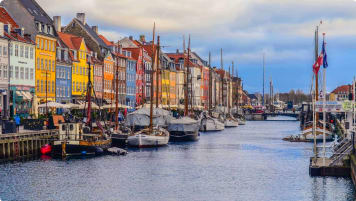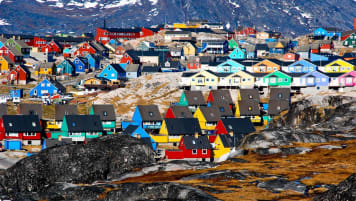Sami people of the Arctic
The Sámi people are the only indigenous people of the European Union and are one of the oldest living cultures of our planet. Article for senior couples and mature single travellers curious about the Samii people and Viking culture that stretches across the Faroe Islands, Norway, Sweden and Finland on a small group educational tour.
28 Oct 21 · 15 mins read
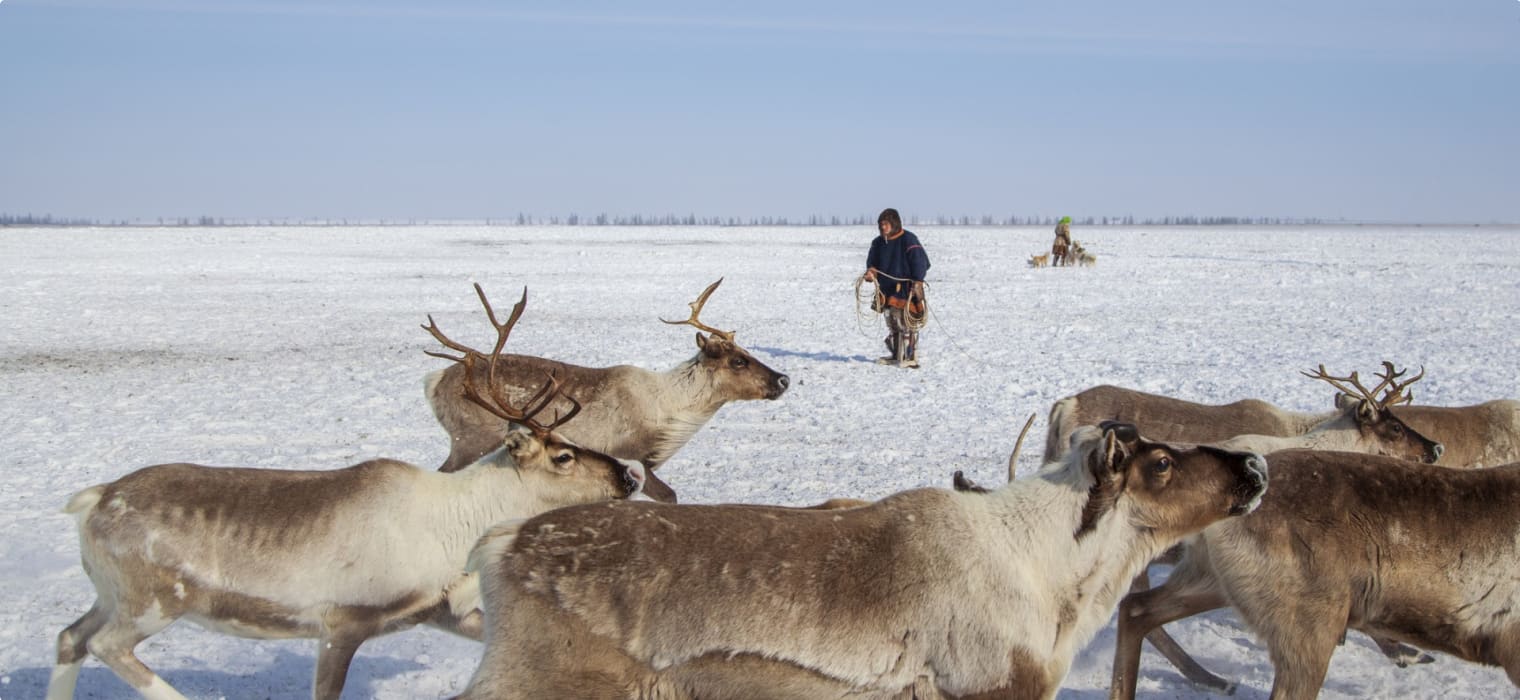
Have you ever heard of the indigenous people that live far away in the northern parts of Europe where the world seems to end? The people of the snow landscapes and where the Northern Lights display the colours of the earth’s atmosphere? The people that seem to speak many languages and have a special connection to the reindeer roaming the land? The people who wear the most colourful traditional dress and have their own parliament that gives them a voice in 3 different countries? Hot tip: It’s not Santa and his elves.
We are about to meet the Sami of Sápmi – also spelled Sámi, Saami, Same, Sabme, or historically called Finnar, Lapp or Laplander whereas the latter two can be offensive to some amongst the Sami population. The word Sápmi (and corresponding terms in other Sami languages) refers to both the Sami land and the Sami people. The Sami are indigenous people who inhabit Sápmi, their preferred name for Lapland and other Nordic regions. The Sámi people are the only indigenous people of the European Union and are one of the oldest living cultures of our planet. They have been surviving the harsh conditions of their homelands for thousands of years, so it is no surprise that they are known for their close connection to the land and the animals that are native to these regions. When we think of the Sami we think of reindeer, Finnish Lapland, the arctic circle and nomads. But we shouldn’t forget the ancient sounds, unique craftwork traditions and a special language that now stand side by side with modern technology. The Sami culture is the oldest culture in large areas of Northern Norway and is currently experiencing a strong renaissance which makes visiting these regions even more exciting.

The Sami people live in 4 countries:
- Norway,
- Sweden,
- Finland as well as in
- Russia on the Kola Peninsula.
The total population of the Sami is approx. 80,000, spread over all these regions. Today around half of the Sami population live in Norway and slightly under half of these people talk Sami. The Sami of Norway live in almost all parts of Northern Norway in the region of Finnmark, and in the southern parts of the country in Trøndelag and Femundsmarka in Hedmark.
Sami have 9 languages
There are 9 different but closely related Sami languages being spoken in the Sami region(s) and potentially could be considered dialects of one principal language. Today, 3 of these languages are actively being used in Northern Norway – Northern Sami, Lule Sami and Southern Sami. Sami people from the south of Northern Norway can talk effortlessly to their closest Sami kin in Sweden but cannot communicate with Sami people from the far north since the language is very different. The dialect boundaries are not in line with country borders and so most of the Sami languages are spoken in several countries. The languages belong to the Finno-Ugric branch of the Uralic family.
Almost all Sami are bilingual in a Sami language and in the official language of the country in which they live. But many no longer even speak their native tongue which makes the Sami languages endangered and therefore they might soon disappear completely. The most commonly used language is Northern Sami and is spoken by about two-thirds of all Saami people – distributed over Northern Finland, Sweden, and Norway. East Sami is spoken in Russia on the Kola Peninsula and by two groups in eastern Finland: the Inari and Skolt Sami. Southern Sami is used by a few Sami in central Norway and north-central Sweden. Sami language is currently the major language in inner Finnmark and is also used in small communities in most parts of Northern Norway as well as in some parts of Northern Norwegian towns.
The Sami languages have some written form and are used for example in newspapers but have limited to no use in education or in government related matters. Many also lack a uniform orthography or literary language. These languages give us today an intriguing insight into the Sami way of life: In Sami there are over 100 different words for snow. During extended parts of the 1900s, the Sami in Norway were forbidden to speak their own language and had to learn Norwegian under strict assimilation policies. As a result, slightly less than half of the Sami in Norway speak a Sami language today.
The Sami are historically nomadic
The Sami are the descendants of nomadic indigenous people who had inhabited Northern Scandinavia for thousands of years. When the Finns entered Finland in the 1st century AD, Sami communities and settlements were probably dispersed over the whole country but today they are confined to its northern extremity. In Sweden and Norway, they have been pushed north in the same way which is believed to be a result of immigration of other ethnic groups. The origin of the Sami is still unknown and there are many contradicting studies. Some scholars include the Sami into the Paleo-Siberian ethnic group or believe they have a strong Asian background. Others maintain that they were alpine and came from central Europe. The latter has been studied with modern DNA testing. It appears that the Sami originated from an old European indigenous population which branched off from other European populations prior to later linguistic and cultural diversification. These diversifications were a natural process in history, created our current world as we know it, and play an ongoing important role in the acceptance and integration of traditions, cultural difference and culture history of ethnic backgrounds coming together.
Reindeer were a staple for the Sami
Reindeer husbandry and reindeer herding were the foundations of the Sami economy and a central of the part of the Sami culture until recent times. The Sami hunted reindeer from the very beginning of their historical presence in Northern Europe and kept them in small numbers as pack and decoy animals. But far-reaching nomadism with large herds of reindeer only started a few centuries ago.
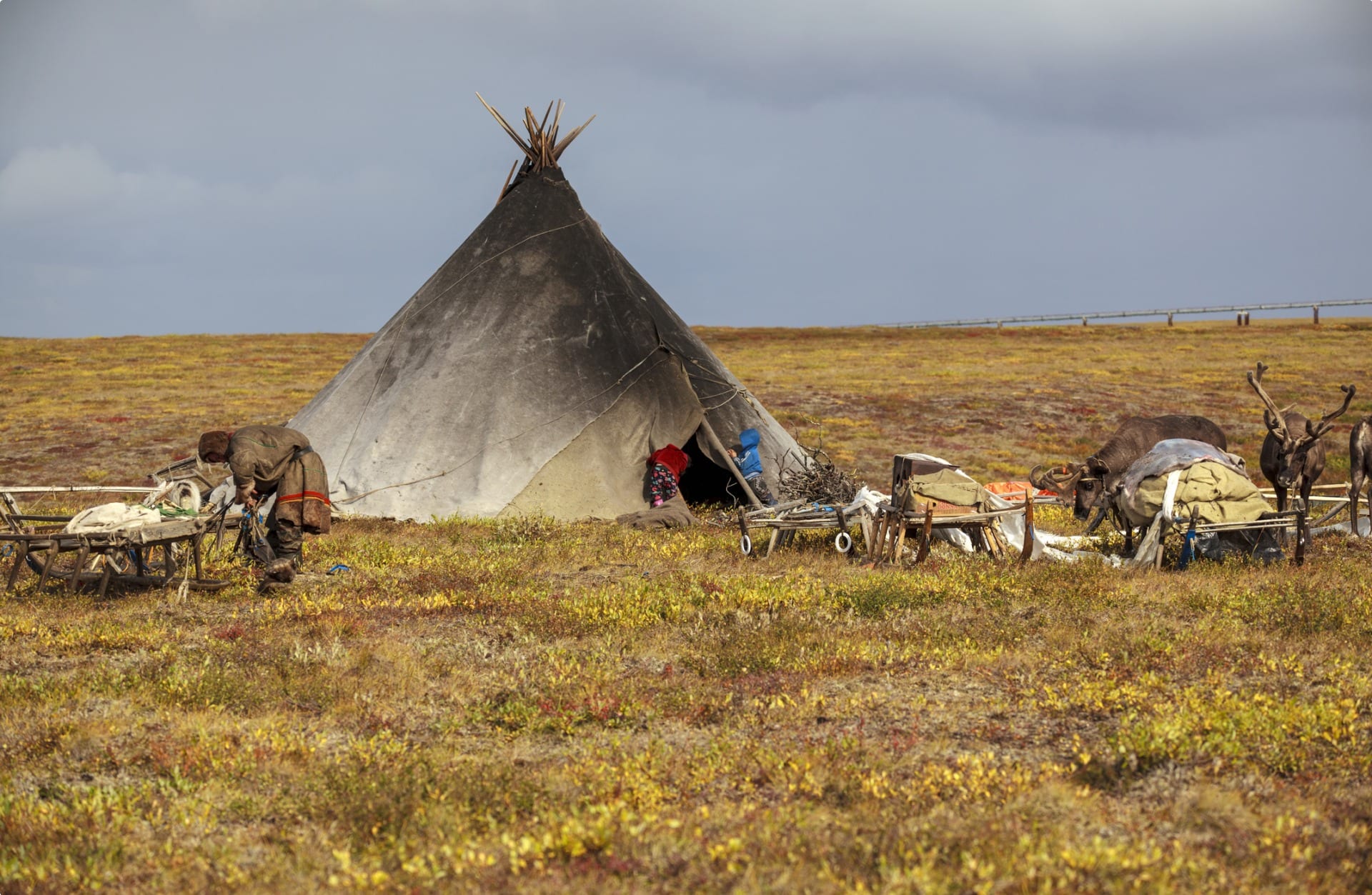
The reindeer herding Sami lived in tents or turf huts and migrated with their herds in small family or tribal groups. Besides using the reindeer as a food supply, the Sami supplemented their diet by hunting and fishing while roaming the vast lands of the Scandinavian peninsula and beyond as semi-nomadic hunters. There is almost no part of the reindeer that isn’t used: meat for cooking, fur and skin for clothes and shoes, and the horns are transformed into everything from useful tools to beautiful art. While reindeer herding was the traditional basis of the Sami economy and trading, that practice has significantly declined nowadays. The modern-day Sami people engage in fishing, farming, forestry, and mining as well as other occupations across Northern Europe. Norwegian reindeer husbandry is practised primarily in Northern Norway,
Trøndelag, Møre og Romsdal in Fjord Norway, and Hedmark in Eastern Norway. Today, about 3,000 people are involved in Sami reindeer husbandry and 2,200 of them reside in Finnmark. Herders make a living by selling reindeer products. The reindeer meat is sold across Norway as well as exported. The reindeer skins are transformed into mittens, shoes and other leather products which make wonderful souvenirs for the conscious visitor.
The Sami as part of Viking culture
During the Middle Ages, one important connection within the Arctic Sami society were the Vikings. Archaeological finds reveal that the Sami livelihood was part of the Viking culture.
Viking history tells us that within Viking culture the Sami indigenous people of Northern Europe were regarded as highly skilled wizards and sorcerers and have been spoken about in the famous medieval Icelandic sagas which involve an unparalleled diversity of geography, history and the people. Some members of the Sami population are not only presented as practitioners of witchcraft but also as teachers of the magic arts. Acknowledging or believing in the Sami was forbidden in early Norwegian law due to their lack of religious beliefs and involvement with the world of magic. In the 18th century the Sami population was converted officially to Christianity but nonetheless until the present day their magic seems to be still a topic for locals and travellers alike.
Darker times in the history of the Sami homeland occurred, starting with the transition period from the Middle Ages to the early modern period, when their so called evil and unpredictable pagan powers set in motion terrible consequences. Finnmark – largest county of Norway – known for its remote location, snowy mountains and wild reindeer also made an unsavoury wave in history books by a terribly high number of witch trials that took place in the 17th century. Witch-hunts started in the 15th and lasted until the 18th century stretching all over Europe and its American colonies and Finnmark wasn’t excluded from the tragic that happened during those trials. The north and the Sami culture after all had long before those trials been associated with the supernatural and the people that participated in it – all documented in the sagas of Norsemen society.
Religion of the Sami
Traditionally, Sámi religion in its basic form is considered Animism which isn’t considered a religion in its own right, but rather an aspect of various practices and beliefs. That leads to the assumption that Sami religion could be considered Paganism. Animism is the belief that objects, places, and creatures all possess a distinct spiritual essence and are alive. The Sámi belief that all significant natural objects (such as animals, plants, rocks, etc.) possess a soul, and from a polytheistic perspective, traditional Sámi beliefs include a multitude of spirits. The Sami religion and beliefs varied somewhat between locations and tribes. Although the deities were similar or often identical their names differed between regions. The deities also were often interchanged, or their identification altered in neighbouring regions which made identifying and classifying them later almost impossible. The Skolt Sami of Finland (and some of the Russian Sami) belong to the Russian Orthodox faith and the remaining are Lutheran. The shaman was important in non-Christian Sami society, and some shamanistic healing rites are still performed to this day. There is, at least in most of the northern Sami communities, a strong evangelical congregationalism and in which many local congregations are virtually autonomous.
During the 1800s the Sami were touched by Christianity. Their traditional and religious beliefs were pushed aside, and many Sámi became the victims of discrimination and oppression from the Norwegian government as well as in other regions of Sápmi. Similar to North America’s native population and many other indigenous people in other parts of the world, the Sámi experienced major repression of their language and culture as well as forced sterilization in Norway. Sami children were forcibly taken from their families and sent to governmental missionary institutions where they were only allowed to speak Norwegian and using the Sami languages of their ancestors was permitted.
The Modern Sami
Nomadism has practically disappeared amongst the Nordic Sami these days. The remaining herders now accompany their reindeer herd alone while their families reside in permanent modern housing and live lives that are very similar to the rest of the Scandinavian population. While many reindeer of a herd might be kept communally, each animal is individually owned, and the herding of reindeer is a shared activity. Many Norwegian Sami are coastal fishermen and those in other areas supplement their income with or full-time engage in farming, forestry, freshwater fishing and mining. More and more Sami participate in recent years in the Scandinavian professional, cultural and academic world incorporating the Sami way into modern society.
Throughout history, the Nordic countries continuously tried to assimilate the Sami, and the use of the Sami languages in schools and public life in addition to practicing any of their traditions was long forbidden. However after 1950 the problems of the Sami minority was publicly noted and the Sami people became more assertive in efforts to maintain their traditions, own society and culture. The use of Sami in schools and the protection of reindeer pastures were a step into the right direction beyond the oppression and segregation of the past. In each country of Sápmi there are Sami organisations that address cultural and political matters related to their own heritage, status and needs. Presently, Sami newspapers and radio programs are available. Today, a large proportion of the Sami people live outside the traditional Sami areas and have moved into towns of Northern Norway or to the Oslo region. A percentage of the Sami population still reside in traditional Sami settlement locations but earn their living in the modern service sector, industry, travel and the public sector.
In 1989, the Sami Parliament was established after many protests that happened over an almost 10-year period against the construction of a hydroelectric power plant in the Altaelva river in Northern Norway – known as the “Alta conflict”. Since then, the Norwegian Sami have been able to elect representatives to a parliament that exclusively focuses on Sami issues and affairs. In particular the question of land rights has become a central matter of interest. The eye-catching building of the parliament located in Karasjok in Finnmark (known as the Sami capital) is shaped as a lavvo – a Sami tent – which has always been a symbol of their nomadic culture and heritage. The architectural piece of art is situated on a ridge above the Karasjok town centre and surrounded by a landscape that is comprised of pine trees and natural vegetation. Visitors are welcome to participate in a guided tour of the parliament building which is given in Sami, Norwegian and English.
Many consider Sami folklore to be mainly vibrant costumes, traditional Sami handicraft products, and catching reindeer with lassos (yes, that is a thing!). But Sami customs and their heritage are noticeable and alive in many areas of Scandinavian life such as music, modern architecture to contemporary art and innovative design. Today’s Sami people might be involved in an unconventional field or profession such as the film industry or they are still herding reindeers like ancient times. One of the most important concepts to note, is that the Sami have always been and still are connected to nature, the land and the seasons similar to many other indigenous cultures of our planet and that makes the Sami identity so special in our modern society.
The Sami ancestry has endless distinctive expressions, and the duodji – Sami handicraft – is one of them. The word duodji acknowledges a creative activity that is performed with hands using diverse materials. Besides having a deep-seated symbolic purpose for the Sami identity and close connection to the lifestyle and the Sami way of life – duodji tools, clothing and accessories are functional and useful but often incorporate artistic elements which make these pieces so unique. Besides some slight changes to the traditional duodji, many traditions of craftsmanship, such as pearl embroidery, weaving shoelaces, wood carving, and knife-making, have been carefully maintained. Nowadays, traditional duodji are considered precious items of art and are treasured by collectors from all over the world. It remains an important part of Sami society as a trade, an additional occupation, a bearer of culture and a conveyor of identity.
The traditional Sami dress kofte is another living tradition and is a vibrant reminder of the Sami past and present values. In modern day Sapmi, it is mainly used to dress up for special occasions – weddings, confirmations, and other cultural or religious events. The colours, patterns, and decorations in every small detail of the dress, can signify a person’s geographical origin. The traditional Sami colours are red, green, blue and yellow. To get an inside into today’s Sami art scene and landscape, the Sami Centre for Contemporary Art in Karasjok is worth adding to your city tour itinerary. The centre aims to be a venue for exhibitions of Sami contemporary art and those include new expressions to traditional duodji.
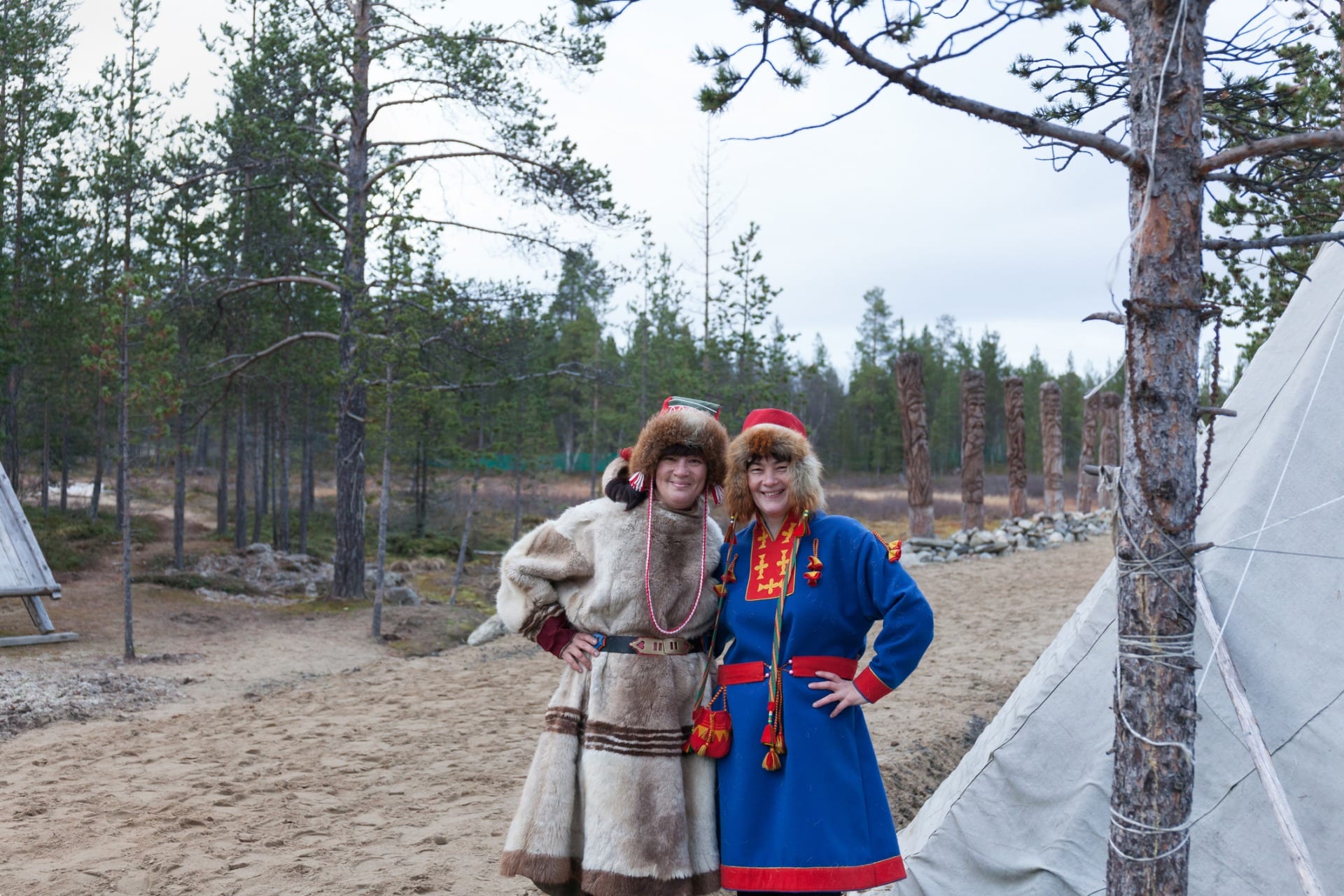
Learning about the Sami today.
During a Scandinavian sightseeing tour, a small group traveller will be able to experience an authentic insight into this fascinating and elusive culture on an optional excursion into the lesser-known part of Northern Europe. From visiting the Sami Siida museum in Inari, the capital of Sami heritage and history in Finland, to spending time with a traditional reindeer herder in Menesjärvi – learning about Sami civilization will be an adventure of a lifetime. Travelling to the very top of Finland to Utsjoki – the only Finnish municipality where the indigenous Sámi people still represent the majority of the population – could be the highlight of a Scandinavia trip. In Northern Norway, one can also experience the Sami culture by camping in a traditional tent, the lavvo, under the Northern Lights (Aurora Borealis), having a close encounter with reindeer and spend time at a traditional Sami art exhibition.
Attending a Sami festival is a sociable and fun activity to start an orientation tour to learn more about the culture and traditions of modern Sami people. In July, the international indigenous festival Riddu Riđđu Festivàla in Manndalen in Troms attracts artists and festival fans from all over the world. With concerts under the midnight sun and a wide range of activities, Riddu Riđđu is not your ordinary festival. The Sami National Day is an ethnic national day for the Sami people that falls on February 6 each year and the Sami Week in Tromsø celebrates everything Sami in conjunction with the special day. There will be endless opportunities to encounter all things Sami – watch reindeer racing, enjoy a folk concert, informative talks, generous portions of the traditional dish bidos which is a Sami reindeer stew and part of the honest Nordic cuisine; and the national championship in lasso throwing should not be missed either. Families and visitors of all ages are drawn to the Sami Easter Festival in Kautokeino that has become a centre point of Sami culture. Other festivals any traveller should check out are the Sami Music Week in Alta, Tana Winter Festival, Márkomeannu in Gállogieddi and Festival Skábma in Lebesby.
Another potential highlight of a Scandinavia tour could be visiting Jokkmokk in Swedish Lapland. Jokkmokk is a natural meeting place for Sámi people from all over Sápmi. Since 1605 – for more than four hundred years – the colourful Jokkmokk market has been celebrated annually, starting on the first Thursday in February. This cosy festivity of cultural activities and amazing culinary experiences falls right into the coldest midwinter weather but won’t leave anybody wanting. The market attracts tens of thousands of international visitors who put this celebration of Sami cultural autonomy on their Scandinavian country trip itinerary. The town is a centre for Sámi culture and provides unique knowledge about the natural resources of the region: game meat with reindeer meat being the most popular, local berries, native herbs and delicious fish.
Learning about Joik
One fascinating, as well as one of the oldest vocal traditions in Europe to encounter, is the Joik – the folk music of the Sami. It has special vocal characteristics and is performed as a dedication to a person, an animal or a place reminding us of the Sami’s spiritual orientation. However according to oral traditions such as the famous sagas, the Sami got their Joik from fairies and elves of the Arctic lands and therefore it used to be an important tool for sharing knowledge and stories. Joik is practised and performed in many circumstances as part of everyday life. The endurance of the Joik throughout the centuries is a remarkable achievement, considering the pressure of acculturation and assimilation the Sami experienced by the Norwegian government. During the Christianisation of the Sami, the Joik was condemned as sinful for a long time and in the 1950s it was forbidden to use Joik in schools. In recent years, the Joik has been experiencing a revitalisation and is now commonly practised in all Sápmi regions. Many young artists include Joik as a traditional element in contemporary music. It has regained a status in society, and it has become progressively more popular to combine Joik with various other styles such as jazz, metal and rock. Some of the oldest Joiks we have knowledge of today were composed by priests and missionaries in the 1700s and 1800s. Passed down from generation to generation the chanting song of the Sami people has survived the centuries.
The Sami and the drum
Apart from these vital vocal traditions other sound rituals contributed to the Sami society. The famous Sami drums (rune drum) are considered historically important artefacts and played an even more important role in the Sami culture. A Sami drum is a shamanic ceremonial drum and these ceremonial drums have two main variations. Both are oval-shaped but ones is build with the drumhead strapped over a burl or designed as a frame drum in which the drumhead stretches over a thin ring of bentwood. The drumhead is fashioned from reindeer hide. Many drums were taken away from their rightful owners during the Christianisation of the Sami people in the 17th- and 18th-centuries. Countless drums were seized by missionaries and other Scandinavian government officials as a part of an escalated Christian mission towards the Sami people, overhauling their spiritual and cultural world. Other drums were bought by private collectors. Approx. 70-80 drums have been preserved and today the largest collection of drums is at the Nordic Museum reserves in Stockholm. In a recent turn of events, Norway’s Sami people are asking for one of these sacred drums to be returned to them permanently. Since 1979, this special drum has been on loan from the Danes to the Sámi museum in Karasjok, Norway. In line with the UN declaration regarding the rights of indigenous people, adopted by Denmark and Norway, it gives Sami people the right to own the historic artefact after all. The drum belonged to a Sámi shaman, Anders Poulsson, who was arrested and imprisoned according to historical court records after a witchcraft trial in 1691. It was confiscated and became part of the Danish royal family’s art collection before being transferred to Denmark’s National Museum in 1849. This case shows that the struggles and cultural challenges of indigenous people are not a thing of the past but still are very relevant in the present day.
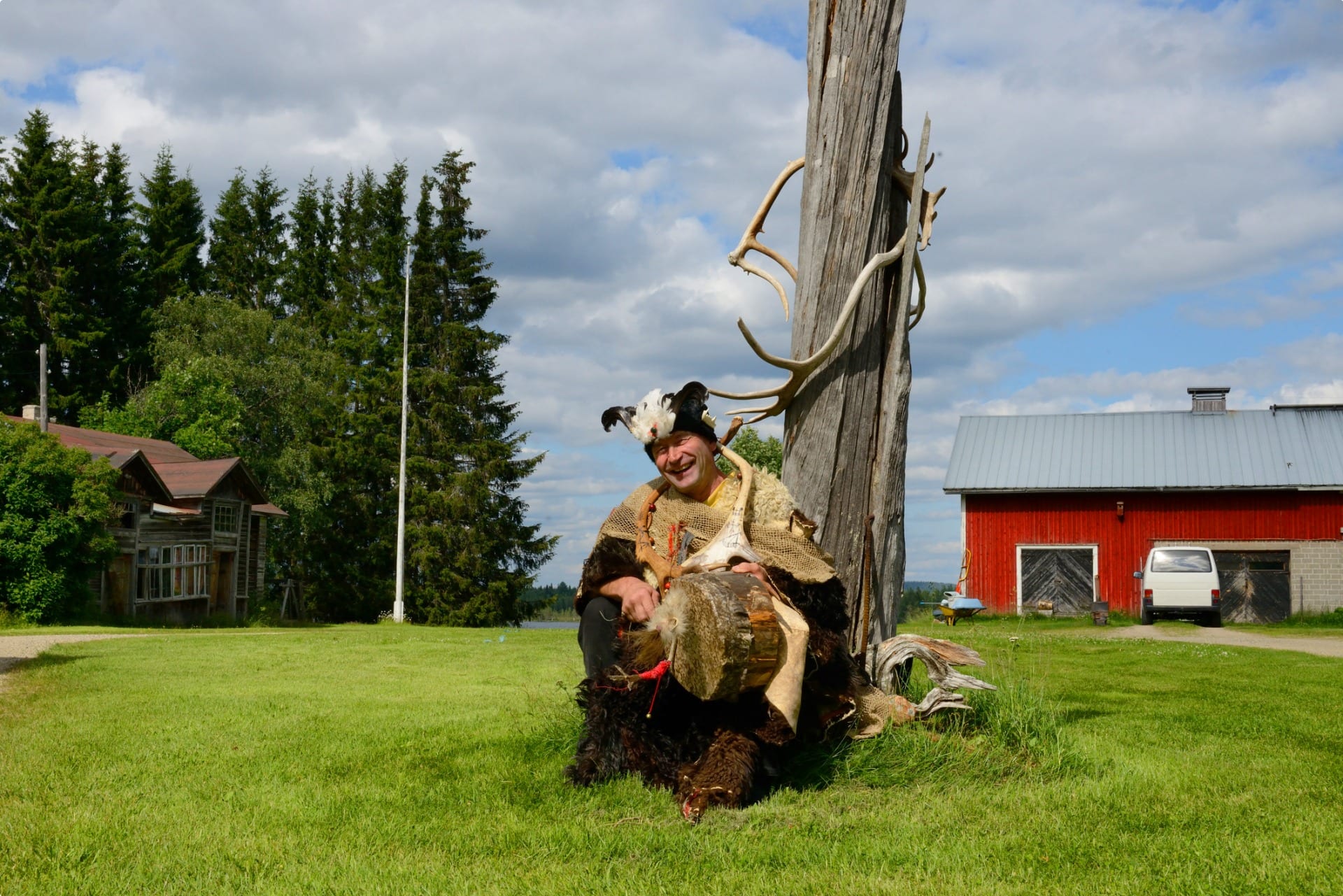
Odyssey small group tours, Vikings, the Sami and exploring the arctic circle.
The best way to see, feel, taste and listen to these remarkable wonders of the Arctic Circle and beyond, is to book an optional tour that compliments the offered Scandinavia tour package. Scandinavian tour packages will take you to all the highlights of this part of the world. After you have been to all the Scandinavian capitals visiting Helsinki, Stockholm and Oslo on a city tour, book a cruise to Greenland or Iceland, the Faroe Islands or stay local and visit one of the majestic Norwegian fjord(s). The options for small group tours in this region are endless and experiencing the Sami lifestyle can be one of those.
Related Tours
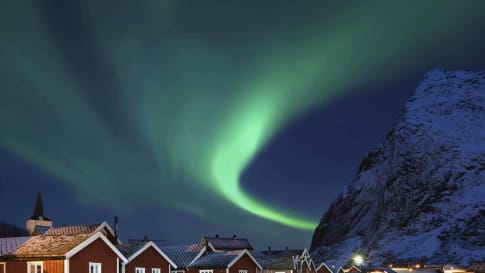
10 days
Oct, JanNorthern Lights Small Group tour | Visit Norway and Finland
Visiting Finland, Norway
Odyssey's small group tour following the Northern Lights allows you to experience serene snow-covered Arctic landscapes. Throughout our journey guides and specialists will outline the history of this stark region and the nature of the peoples who wrested their living from it. A unique opportunity to view this natural phenomenon travelling as part of a small group.
From A$9,625 AUD
View Tour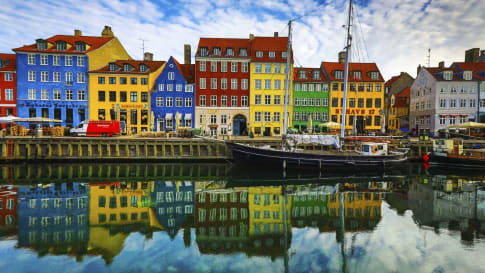
13 days
Jun, SepScandinavia tours for mature travellers
Visiting Denmark, Norway
Uncover on a small group tour for couples and solo travellers, a Viking past and view of the world’s biggest fjords on this journey through Scandinavia. In low-lying Denmark our small group journey takes us to visit the Zeeland, the sea land, and our program includes the vibrant capital of Copenhagen. In Norway we travel through endless forests, skirting great fjords to Bergen.
From A$14,995 AUD
View Tour
17 days
May, SepIceland cultural and wilderness small group tour
Visiting Iceland
Our escorted tour gives guests an insight into the history of this Icelandic nation. Travelling as a small group, our daily itineraries explore the Jokulsarlon Glacier Lagoon and others, national parks and majestic waterfalls as we learn about Iceland’s natural heritage and its Viking past from experienced local guides. There is a single supplement for solo travellers.
From A$18,995 AUD
View Tour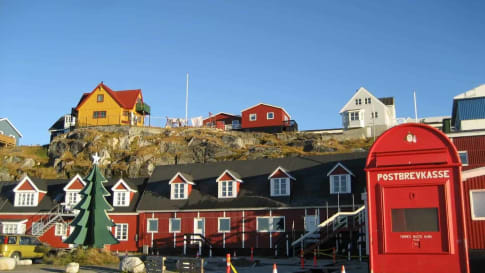
4 days
Sep, MayDiscover Greenland | Small Group Tour for Seniors
Visiting Greenland
Greenland is the largest island in the world, the majority of it lies above the Arctic Circle, and it is part of Denmark. Few places are quite so difficult to reach, we fly from Reykjavik to Nuuk. During this small group tour we have ensured that our travellers gets to this conversation-stopping land and, while we are there we obtain the most comprehensive overview of this vast landmass. We visit during the summer, experiencing the burst of seasonal flora, which caused the early voyagers to name it Greenland.
From A$6,450 AUD
View Tour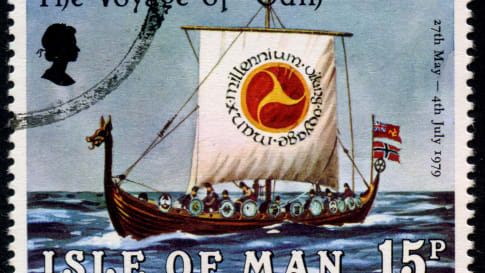
28 days
Jun, Sep, May, AugVikings in Britain; small group tour
Visiting England, Ireland
Vikings in Britain, escorted educational small group tour for senior couples and mature solo travellers who for 27 days explore Ireland, the isle of Man, Scotland and England and the viking history.
From A$20,385 AUD
View Tour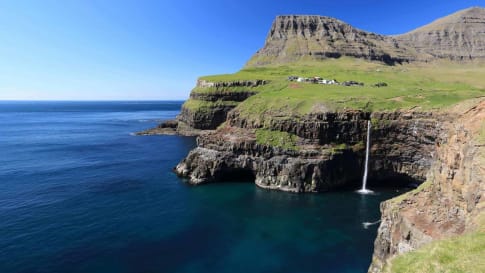
5 days
Apr, SepFaroe Islands Tour
Visiting Denmark
Few European tour companies offer small group journeys to the Faroe Islands. This five-day small group tour designed for mature couples and solo travellers. Local guides take you on trips off the beaten path to visit some of the islands' most stunning sights and to explore the capital of Tórshavn.
From A$7,250 AUD
View TourRelated Articles
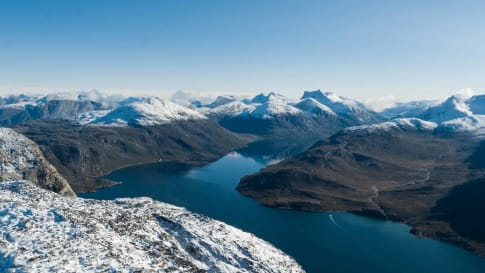
Viking History of Greenland
The Vikings explored the Arctic circle for 5 centuries reaching Greenland as well as North America. Learn about the history of the Vikings before enjoying a small group tour for senior couples and mature solo travellers.

Sami culture within the Vikings
Article about the Sami culture of the Arctic circle for small group educational tours for senior couples and mature single travellers interested in learning about the Vikings and their journeys into the Atlantic and south across Russia.
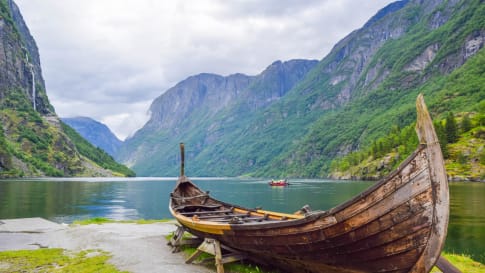
The Vikings
Vikings explored, pillaged, settled and traded their way in 300 years across the North Atlantic in the Longships to Iceland and Greenland or south through Europe/Russia to Istanbul and Persia. Learn more on a small group educational tour for senior couples and mature solo travellers interested in Viking history.
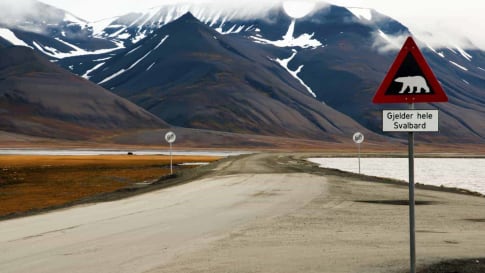
Understanding Greenland
Greenland recognises the devastating effects of climate change and continues to push for responsible and sustainable tourism.
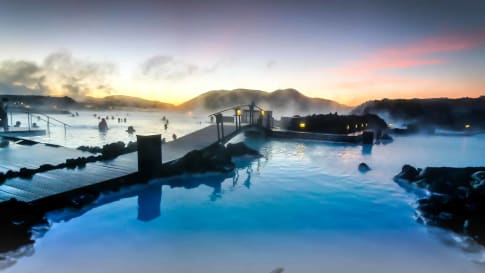
The History of the Settlement of Iceland
Marooned at the top of the globe, somewhere in the North Atlantic Ocean, lies the island nation of Iceland, a land of vivid contrasts where nature reigns supreme in her most dramatic form. Iceland is the world's oldest democracy and boasts more writer's per capita than any other country in the world. It is said that many Icelanders still believe in the mythical figures of the Norse past, such as elves, trolls and fairies, which may be due to the country's literary history including its famous sagas, epic tales based on Iceland's settlement from around 9-11 AD.

The Viking's Woollen Sails
Vikings and Their Use of Wool for Sails This educational article aims to help senior travellers immerse in the world of Vikings before they take part in a memorable travel experience across Scandinavia. It helps…
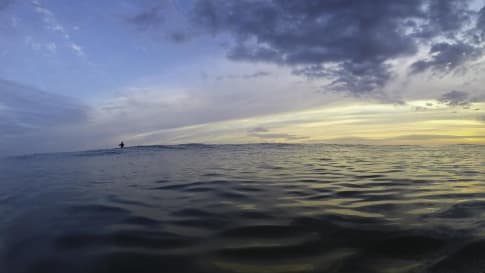
Atlantic Ocean and How it Shaped Ancient Communities In Europe
Article of interest for senior couples and mature solo travellers joining a small group European tour to Faroe Islands, Scottish Isles, Morocco or Portugal. Focus is on the early exploration of the Atlantic.
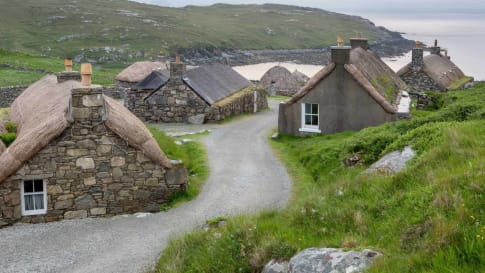
Islands of the Outer Hebrides: The Definitive Guide for Travellers
Scotland's Outer Hebrides are discussed in this article to assist the mature solo and couple in planning to visit Scotland and the British isles on a small group tour.

Orkney Islands, Scotland
Explore the Orkney and other isles of Scotland on a small group tour for senior couples or solo travellers interested in Scottish history. Learn about Skara Brae and prehistoric Britain as well as the importance of Peat and Whisky.
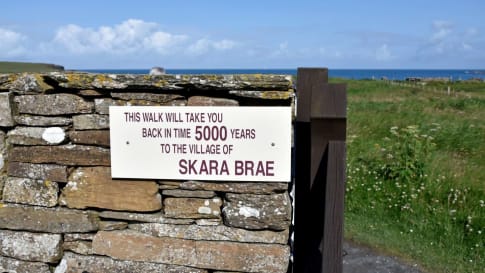
Skara Brae, Scotland
Article introducing Neolithic Britain and the trading routes to Iceland, the Faroe Islands and the Irish sea. Skara brae is included on the Scottish isles tour and the Prehistoric Britain program. Small group tours for senior couples and mature solo travelers.
